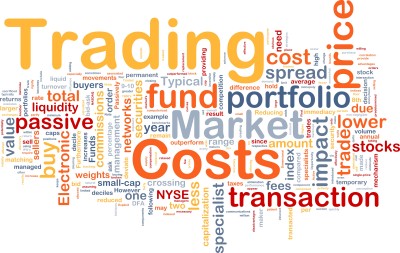Problem #1 with Using Historical Stock Data to Predict Returns — The Future Might Not Be Like the Past.
The Stock-Return Predictor does not really predict anything. It reports how stocks will perform from various valuation levels presuming that stocks continue to perform in the future much as they have in the past.

That’s a reasonable assumption in a general sense. But it is almost certain that there will be surprises. To at least a small extent, it is certain that stocks will not perform in the future as they have in the past. It is possible, although far less likely, that stocks will perform in the future in wildly different ways from how we have ever seen them perform in the past.
The Predictor does not see into the future. To the extent that stocks perform in the future in ways in which they have not performed in the past, the results generated by the calculator will be off the mark.
Problem #2 with Using Historical Stock Data to Predict Returns — The Data Set on Which It is Based Is Limited.
We have available to us historical U.S. stock-return data dating back to 1870. That’s enough to generate meaningful return predictions using a regression analysis. The calculator would be more effective if we had more data available to us, however. More data is always better.
Problem #3 with Using Historical Stock Data to Predict Returns — P/E10 May Not Be the Best Valuation-Assessment Tool.
The Predictor uses the P/E10 valuation assessment tool to determine the effect of valuations on long-term returns. There are a good number of reasons for believing that P/E10 is the best valuation assessment tool available today. But it is possible that this is not the case.
Unfortunately, it is only a small number of investing analysts who trouble themselves to study the effect of valuations. The more people who worked this field, the more confidence we could have in our belief that P/E10 is the best valuation assessment tool. I can tell you that I believe that P/E10 does a good job. But I also urge you to research this question for yourself to come to a better understanding of the pros and cons of P/E10 and of the other valuation assessment tools available to us today.
Problem #4 with Using Historical Stock Data to Predict Returns — It Does Not Offer Short-Term Predictions.
The Return Predictor does not offer predictions for time-periods of less than 10 years. That’s because it is not possible with the tools we possess today to offer predictions that are statistically meaningful for shorter time-periods. It may never be possible.
My guess is that there would be a far greater number of investors who would be interested in making use of a calculator that offered one-year predictions or three-year predictions or five-year predictions. This tool does not pretend to be of value to any types of investors other than long-term investors.
Problem #5 with Using Historical Stock Data to Predict Returns — It Does Not Offer Much Precision in its Ten-Year Predictions.

At the time this article was written (March 2007), the 10-year annualized real-return prediction ranges from a negative 4.90 to a positive 7.10. That covers a lot of territory. Most investors would be horrified to obtain a 10-year annualized real return of a negative 4.90. Most would be quite pleased to obtain a 10-year annualized real return of 7.10.
That’s the best we can do with the tools we possess today. Knowing the range is valuable because it permits you to compare the value proposition of investing in stocks at today’s valuation level with the value proposition of investing in stocks at other valuation levels. Still, it would be nice if the 10-year predictions could be more precise. (The level of precision of the predictions improves at 20 years, and again at 30 years.)
Problem #6 with Using Historical Stock Data to Predict Returns — The Results Generated Always Cut In Two Directions.
The Return Predictor offers a dark view of the value proposition of investing in stocks today. The 20-year prediction is for a most-likely annualized real return of 2.6. You could do almost that well with risk-free Treasury Inflation-Protected Securities (TIPS).
The calculator is not telling you to stay out of stocks, however. It also reports that the 20-year annualized real return could be as high as 6.6, and that the most likely 30-year return is 5.3. Those numbers beat the socks off of what can be obtained from TIPS purchased today.
So the story is mixed. Stocks are generally not a good buy. But strong arguments can be made for investing a portion of your portfolio in stocks all the same.
The calculator is showing you how stock investing really works. The calculator is helping you to appreciate the long-term investing realities. Still, the sophisticated message being delivered by the calculator can be viewed as a negative in that it may confuse users who do not spend enough time with the calculator to appreciate fully what it does. This is a tool aimed at the investor who is serious enough to spend a bit of time coming to appreciate the complexities of real-life stock investing.
Problem #7 with Using Historical Stock Data to Predict Returns — It is Not Diplomatic.
Few of today’s investing experts are willing to tell it straight to their readers. Some of the best-informed will occasionally make note of the dangers of investing in stocks at today’s prices. Most engage in lots of happy talk, seemingly more concerned with remaining popular than with helping their readers avoid the portfolio-destroying losses that are characteristic of today’s high price levels.

Many investors have become so accustomed to happy talk that they have come to view it as “rude” for someone to cite what the historical stock-return data says about the effect of valuations on long-term returns. The calculator reports numbers. When we are at the valuation levels that apply today, the numbers are not pretty. The calculator tells it like it is. The calculator is “rude” without intending to be. It reports numbers that a good number of investors would prefer not to hear.
Problem #8 with Using Historical Stock Data to Predict Returns — It Can Easily Be Misused.
Any tool can be misused. I can imagine a user of this calculator thinking that the return identified as “most likely” is certain to turn up. No! It doesn’t work that way. The most-likely return is bit more likely to turn up than any of the alternatives. But in all likelihood the real-world return is going to be a number at least somewhat higher or lower than the return identified as “most likely.”
Please spend some time thinking through how the calculator works and what it really is saying before putting it to use. Ask questions. Take the results you obtain and check with other sources as to whether they make sense or not. Use the calculator as a learning tool, not as a magic genie that sees into the future and tells you all that you need to know to invest without you also making use of both your common sense and all the rest of what you have learned about investing over the years.
Problem #9 with Using Historical Stock Data to Predict Returns — There Are Few Similar Calculators Available Today.
There is no other publicly available calculator that does precisely what the Stock-Return Predictor does. There are few web sites or books that offer information even similar to the information available through the Predictor.
It is my hope that that will change over time. As more such calculators are made available, we will discover enhancements that can be made to this one. Someone had to get the ball rolling by making such a tool available, and I am proud of the Stock-Return Predictor. I don’t view it as a perfected tool, however. We learn through trial and error. It’s not possible for the first version of anything to be the perfected version.
Problem #10 with Using Historical Stock Data to Predict Returns — Only Investors With Emotional Fortitude Will Be Able to Make Good Use of This Tool.

The information provided by the Return Predictor can make you a better investor. But guess what? The calculator provides only information. The most important factor determining how successful you will be is your emotional fortitude in sticking to a sound strategy when it’s not easy to do so. The calculator can serve to help build your confidence. It cannot do the job alone.
I am a firm believer that the most important aspect of the investing project is the emotional aspect. Please don’t ever come to believe that a tool like The Stock-Return Predictor can by itself transform you into a true long-term buy-and-hold investor. It’s a help. That’s all that it is intended to be.
